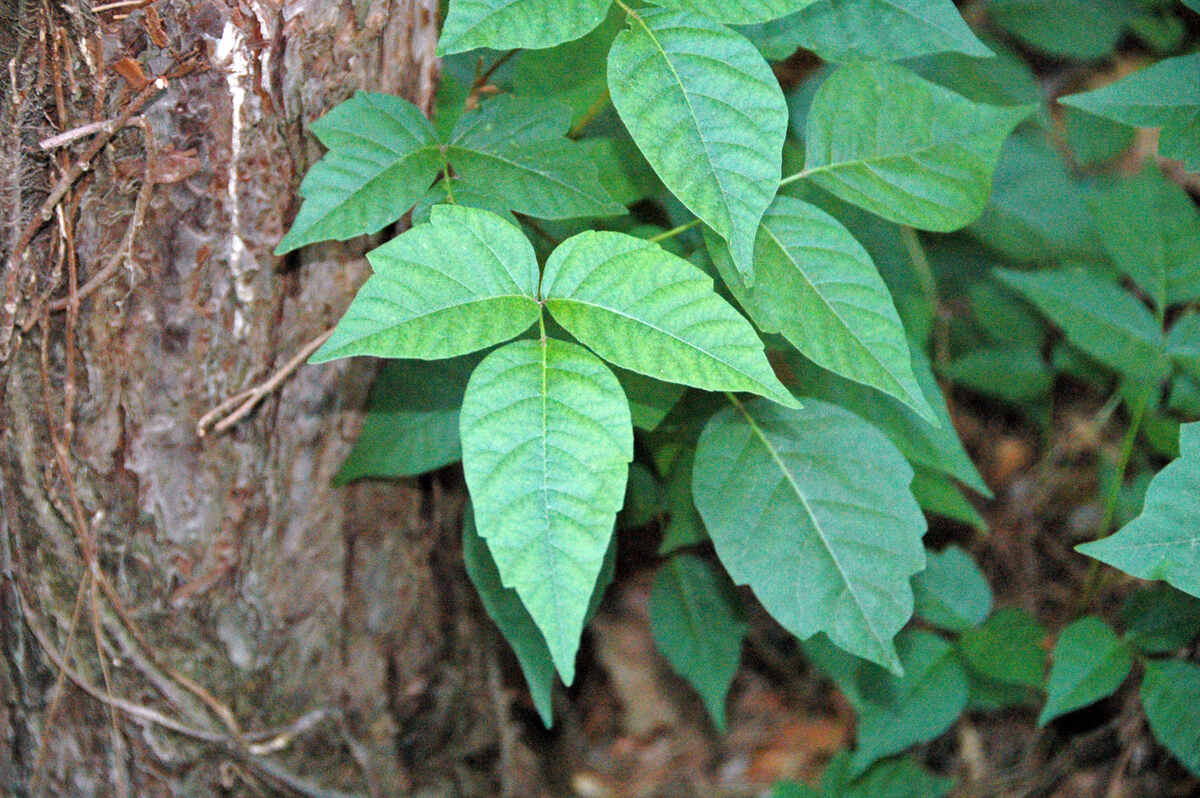
Hopefully, you aren’t too familiar with poison ivy, but sometimes this rash-inducing plant sprouts in your yard. The sooner you get rid of it, the better.
With tips from experts, we’ll share how to remove poison ivy by hand or with herbicides or vinegar solutions. Homeowners can even use grazing goats to get rid of poison ivy. If this three-leaved plant has popped up on your property, here are 8 ways to get rid of poison ivy in your yard.
| Project Difficulty: Easy Estimated Time to Complete: Depending on the method and size of infestation, it takes at least 1 week. Most removals will take several weeks (or longer) before the ivy is completely gone. Project Cost: Varies depending on the removal method. Some methods, like hand-pulling, cost nothing, while others, like goat grazing, can cost up to $800 per acre. |
Before you start, take caution: Poison ivy leaves produce urushiol (a plant oil). When humans touch the sap from poison ivy’s stems, leaves, or berries, they are exposed to the oil, which 85% to 90% of adults are allergic to, according to a study in the Journal of Clinical and Aesthetic Dermatology. But don’t worry. We’ll explain how to get rid of poison ivy and stay rash-free.
1. Hand Removal
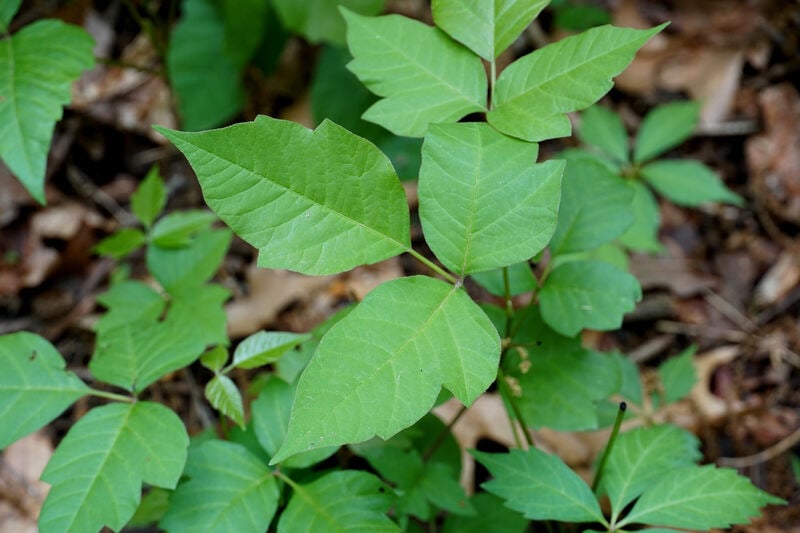
| Best For | Time to Complete | Project Cost | Effectiveness |
| Small infestations | 1 week | $0 | High, especially for small plants. Larger plants may regrow. |
Hand-removal is one of the most effective ways to remove poison ivy. “Very small plants (those with 1 or 2 leaves — 3 or 6 leaflets) can be hand pulled or dug,” says Aaron Steil, a consumer horticulture Extension specialist at Iowa State University. “This method is done more easily after a soaking rain or deep watering.”
Pull up the roots to prevent regrowth.
What you’ll need:
- Long shirt and pants
- Closed-toe shoes
- High socks
- Gloves, either heavy-duty or waterproof
- Goggles
- Garden trowel or shovel
Pro Tip: Wrap duct tape around the opening of your gloves and pant legs to protect your skin from exposure.
How to remove poison ivy by hand:
- Hand-pull individual poison ivy plants from your yard.
- For larger vines, use a garden trowel or shovel to dig the plant up by the roots.
- After you finish, thoroughly wash your gloves, clothes, shoes, and equipment.
If you’re having trouble with poison ivy removal, call a lawn treatment professional.
2. Mowing or Cutting
| Best For | Time to Complete | Project Cost | Effectiveness |
| Large infestations | Repeated mowing over several years | $14 to $322 | High, but takes years for complete control |
Repeated mowing or trimming eventually kills poison ivy. Without its stem and leaves, poison ivy will not be able to access the nutrients it needs to survive.
What you’ll need:
How to mow or trim poison ivy:
Repeatedly mow over poison ivy or trim it back with shears or a weed eater. Continue to trim it until it stops growing back. Clean your mower, weed eater, or shears after use.
3. Boiling Water

| Best For | Time to Complete | Project Cost | Effectiveness |
| Small infestations | 1 day, with repeated treatments every 7-10 days | $0 | High, but takes repeated applications |
Boiling water kills poison ivy by scalding its tissue.
What you’ll need:
- Pot or kettle of boiling water
- Protective clothing, eyewear, and gloves or oven mitts
How to remove poison ivy with boiling water:
- Take a pot or kettle of boiling water outside and pour it on the poison ivy. Be careful not to splash the hot water on you.
- Repeat the process until the poison ivy withers and dies.
4. Vinegar Solution
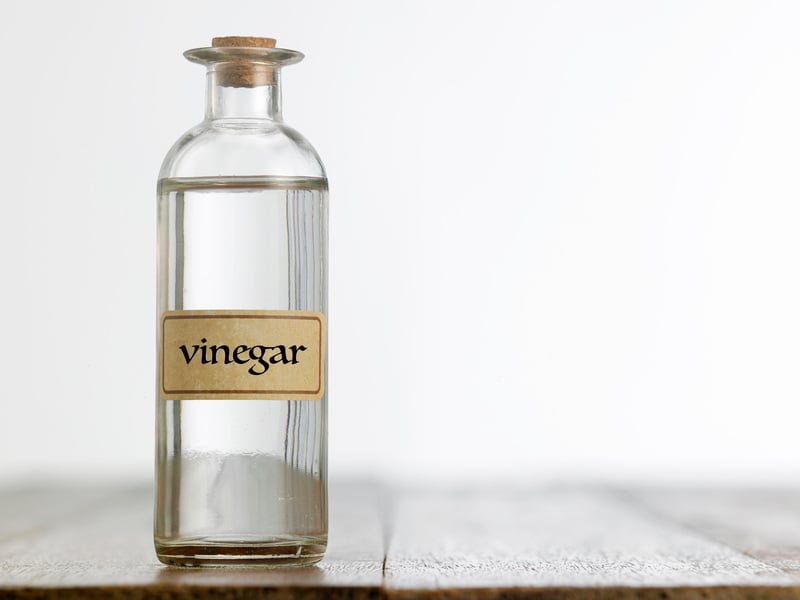
| Best For | Time to Complete | Project Cost | Effectiveness |
| Small to medium infestations | Several weeks | $3 to $12 | Low to moderate, but takes repeated applications |
Make a vinegar herbicide to treat poison ivy plants. “Vinegar may burn down the top, but rarely kills the root system,” says Nancy Loewenstein, former Extension specialist at Auburn University. “Until the root is dead, it can continue to grow back.” Repeated applications will be necessary.
What you’ll need:
- 1 gallon 5% vinegar
- 1 cup of salt (optional)
- 1 tablespoon dish soap
How to make a vinegar solution:
- Mix the ingredients.
- Pour into a spray bottle.
- Spray onto the poison ivy.
If you have horticultural-strength vinegar (10% to 20%), you can use it directly on poison ivy with no added ingredients.
Pro Tip: Vinegar kills weeds but also kills any other vegetation it touches, so take precautions to avoid spraying nearby plants. Also, use personal protective equipment when spraying vinegar.
5. Smothering
| Best For | Time to Complete | Project Cost | Effectiveness |
| Small infestations | 1-3 weeks | $10 to $34 | Low |
Smothering poison ivy kills the plant by depriving it of the light and oxygen it needs to survive.
What you’ll need:
- A piece of cardboard or a plastic tarp
How to smother poison ivy:
- Hand-pull as much poison ivy as you can.
- Cover the ivy with cardboard or a tarp (the same process as sheet mulching to kill grass).
- Secure the cover so it doesn’t blow away.
- Leave the cover for 1 week.
- After a week, check the ivy. If the ivy is brown and dry, it is dead. If not, leave the covering on for another week and continue to check it until the ivy is dead.
6. Herbicides
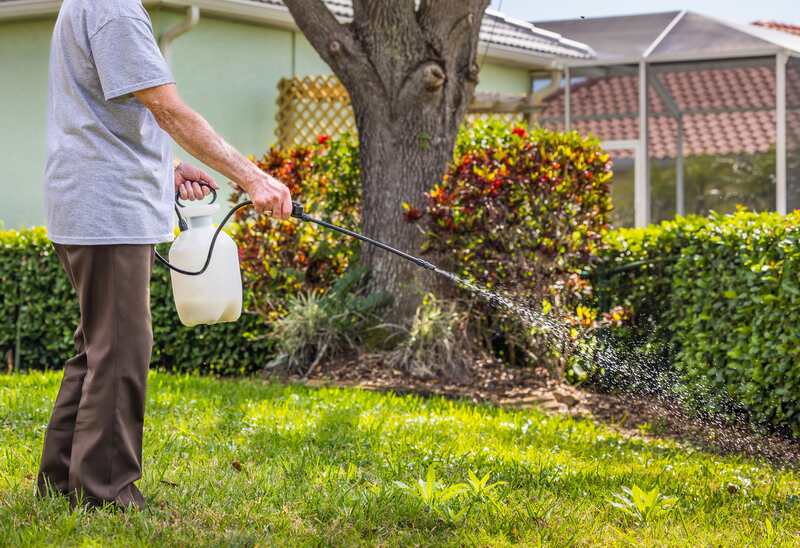
| Best For | Time to Complete | Project Cost | Effectiveness |
| Medium or large infestations | Several weeks | $25 to $35 | High |
According to the University of Georgia Extension, homeowners can use glyphosate, triclopyr, and dicamba to control poison ivy.
“A combination of control approaches typically works best for most plants, including poison ivy. However, herbicides are probably the most important tool in the toolbox. It may be difficult to control poison ivy without them,” says Loewenstein.
For effective control, you may need to adjust the concentration or use multiple applications.
- Read and follow the label instructions carefully.
- The application method will depend on whether you have a liquid or granular herbicide.
- Liquid herbicide: Spray liquid herbicide onto the poison ivy plants.
- Granular herbicide: For an even distribution, calibrate your spreader and distribute the granules around infested patches.
Steil notes another key advantage of using herbicides on poison ivy: “They allow for … minimal interaction with the plant,” he says. In other words, this “hands off” approach means you won’t have to deal with the itch afterwards.
Check out our sections on How to Apply a Granular Pre-Emergent Herbicide and How to Apply a Liquid Pre-Emergent Herbicide for general instructions on applying herbicides by type.
7. Goat Grazing
| Best For | Time to Complete | Project Cost | Effectiveness |
| Large infestations | 1-2 days | $400 to $800 an acre | High, but will take repeated grazings |
Goats may seem like an unusual solution, but they are the perfect antidote to poison ivy in your yard since they can eat poison ivy without suffering any health problems. If you don’t own goats, you may be able to rent one from a nearby goat rental service.
Grazing goats eat only the leaves, leaving the roots behind. That means the poison ivy might grow back several times before it is finally killed by the goats’ feeding habits. You may have to combine goats with other removal methods to completely get rid of the poison ivy in your yard.
Pro tip: Avoid petting the goats that feed on poison ivy. Urushiol can get on their fur and spread to your skin.
8. Professional Removal
| Best For | Time to Complete | Project Cost | Effectiveness |
| Large infestations | May take several weeks | $65 to $165 | High |
Whether you have tried everything to get rid of a stubborn patch of poison ivy or simply don’t want to risk getting close to it, call a professional lawn treatment company to remove the poison ivy in your yard.
How to Dispose of Poison Ivy: Do’s and Don’ts
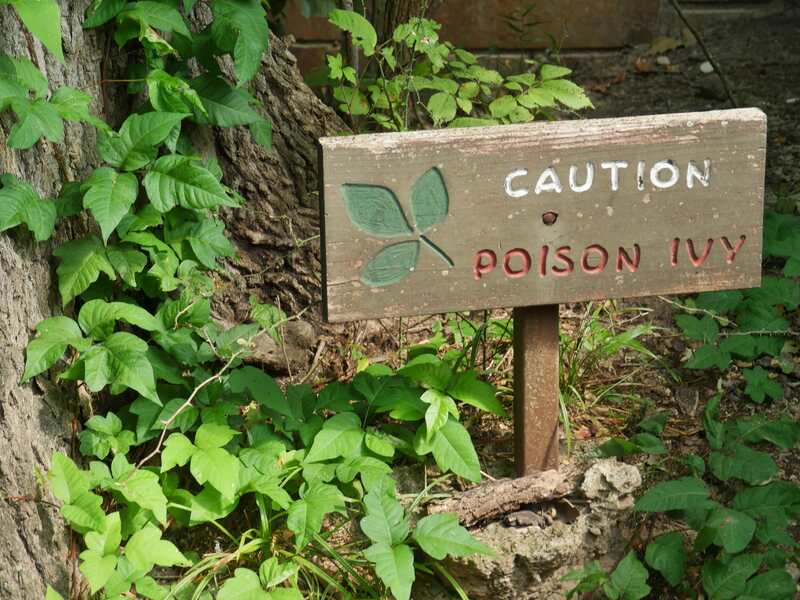
Do’s:
- Dispose of the poison ivy in a heavy-duty trash bag. Tie the bag up tightly, making sure there are no holes.
- Be careful as you dispose of it, as dead poison ivy can still cause rashes. Also, urushiol can stay active on surfaces for up to 5 years, so don’t count on it wearing off.
Don’ts:
- Do not burn the poison ivy. The smoke spreads urushiol into the air, which may irritate your eyes. “The oils can [also] be inhaled and cause problems in the throat and lungs,” says Steil.
- Do not compost poison ivy.
How to Clean-Up After You’ve Removed Poison Ivy
Don’t touch anything until after you wash your hands and have a chance to clean up. Poison ivy spreads easily to anything you touch.
Here’s how to avoid spreading urushiol and causing an allergic reaction to poison ivy:
- Clean your clothes and gloves with a strong degreasing detergent. Wash the clothes on the hot setting. Your shoes and eyewear also need to be washed with hot water and dish soap.
- Wash your hands and any exposed skin with rubbing alcohol or cold water (NOT hot) and dish soap.
- Wash your equipment with hot water and dish soap.
Rid Your Yard of Poison Ivy
Try any of these methods (or a combination) to get rid of poison ivy in your yard. But If you don’t want to deal with treating the poison ivy yourself, hire a lawn treatment company to safely remove the poison ivy for you.
Read More: How Much Does Weed Control Cost?
Sources:
- Aaron Steil, consumer horticulture Extension specialist at Iowa State University, Ames, IA. Personal interview.
- “Controlling Poison Ivy in the Landscape.” By Mark Czarnota, associate professor. University of Georgia Extension.
- “Ditch the Itch: A Poison Ivy Primer.” Doylestown Health.
- “How to Control Poison Ivy.” By Aaron Steil, consumer horticulture Extension specialist. Iowa State University.
- Nancy Loewenstein, former Extension specialist at Auburn University, Auburn, AL. Personal interview.
- “Poison Ivy.” By Randy Prostak, Extension weed specialist. University of Massachusetts Amherst.
- “Toxicodendron Contact Dermatitis: A Case Report and Brief Review.” By Joe Monroe, general and surgical dermatology practitioner. Journal of Clinical and Aesthetic Dermatology.
- “What Can I Do to Get Rid of the Poison Ivy in my Yard?” University of New Hampshire.
Main Image Credit: Poison Ivy. James St. John / Flickr / CC BY 2.0